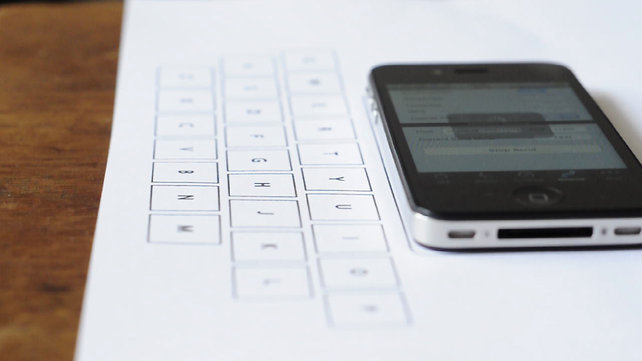
Florian Kräutli has come up with a very unique way to give your iPhone a keyboard without buying the actual hardware. The Vibrative Virtual Keyboard can make any surface a keyboard by utilizing the phone’s accelerometer and measuring vibrations on the attached surface. The app then uses these to figure out exactly where the tap is originating from and then use it to type accordingly. This then allows the surface to be used as a QWERTY keyboard without the clicking keys.
Kräutli explains the thinking behind his app by saying that, “I wondered how a normal surface might become interactive, without using an elaborate combination of projectors and cameras, as Microsoft is currently doing in their research. There are already tons of sensors in current smartphones, so I thought there must be more that we can do with them.”
Kräutli used an already approved app called SensorMonitor to get the sensor outputs from the iPhone through a network connection and then wrote some code to analyze the sensor output on a networked Macbook. The app needs to be calibrated the first time it is used by tapping on the surface a few time and then assigning keys to that location. Surfaces can be saved so that calibration does not need to take place every time.
The major problem is that the whole system cannot be perfect but the design has been made to utilize this flaw. Kräutli states that, “The important bit is that the software needs to deal with the fact that this recognition is not perfect. Therefore it also uses a kind of spell checker.” The autocorrect feature works behind the scenes and makes typing more accurate. The keyboard will not work well with a very popular iPhone app category: games.
Kräutli explains that, “When you play a game, you want every interaction to be recognized correctly. Typically, you also want this when typing, but because the software ‘knows’ that you are writing with a certain vocabulary, it can correct errors more easily.”
The invisible keyboard is an example of where digital input is going and how clever use of technology can make our current devices a lot more smarter.
Source: Fast Company
Photo: Fast Company